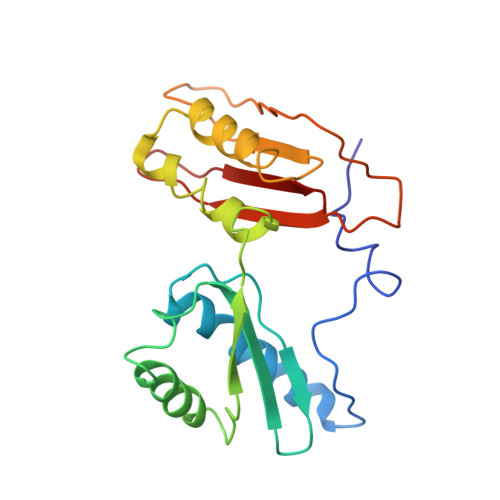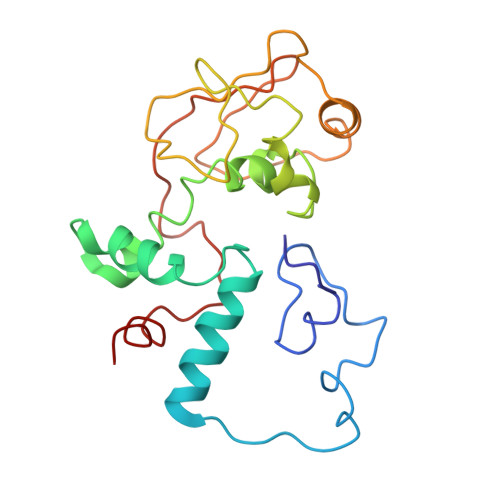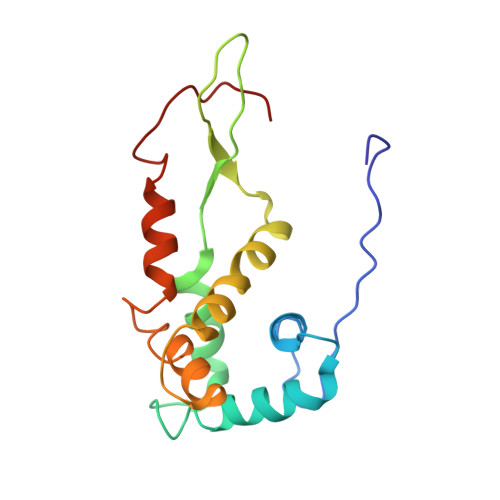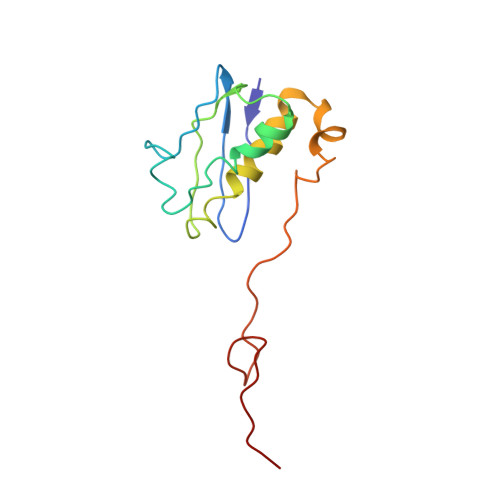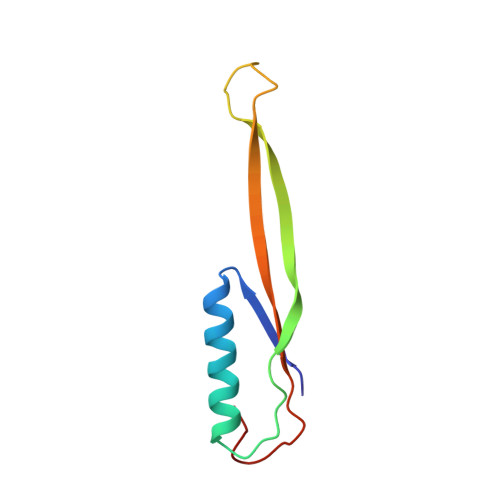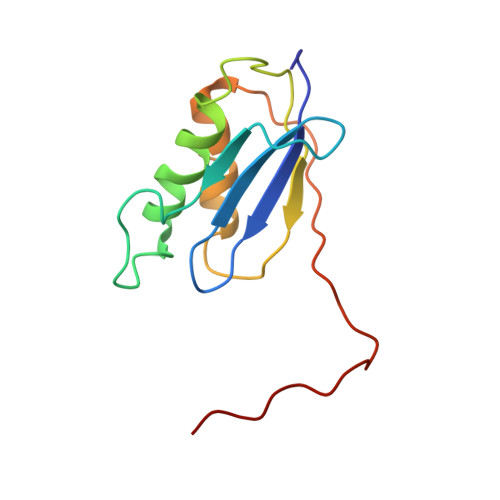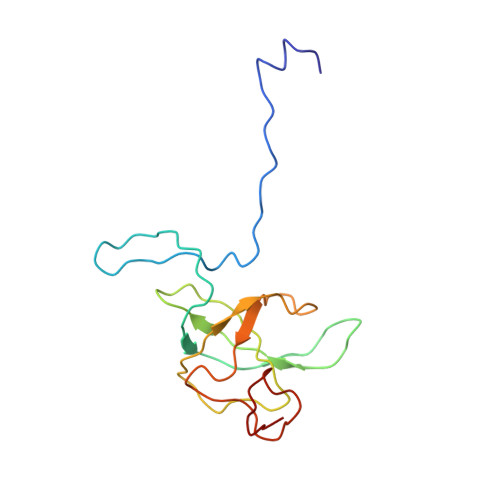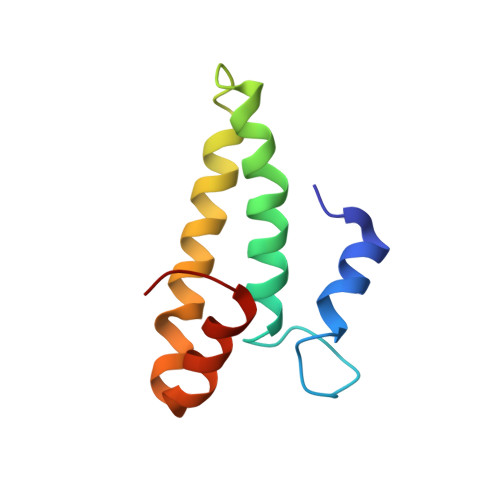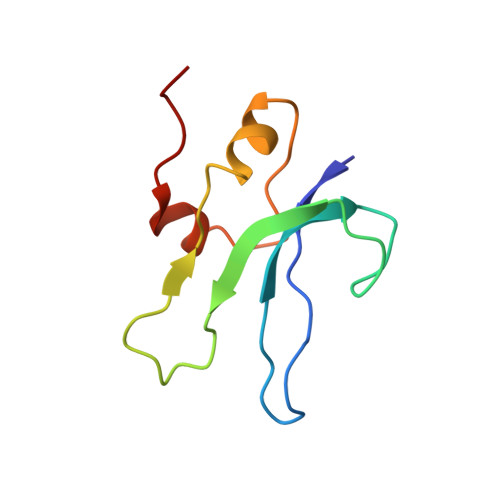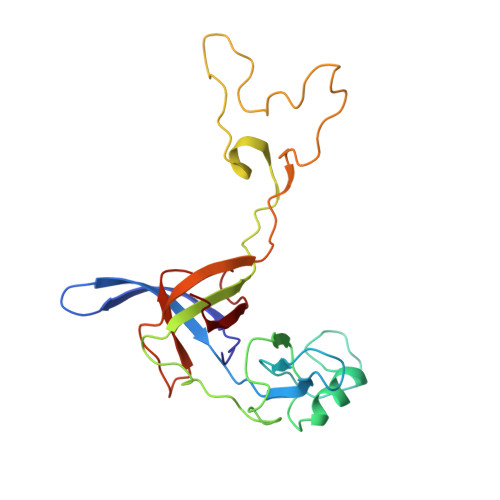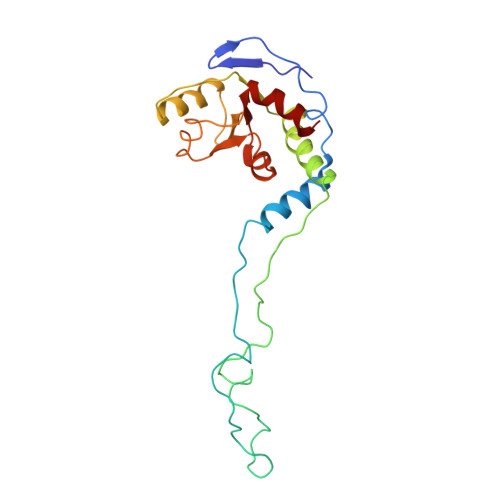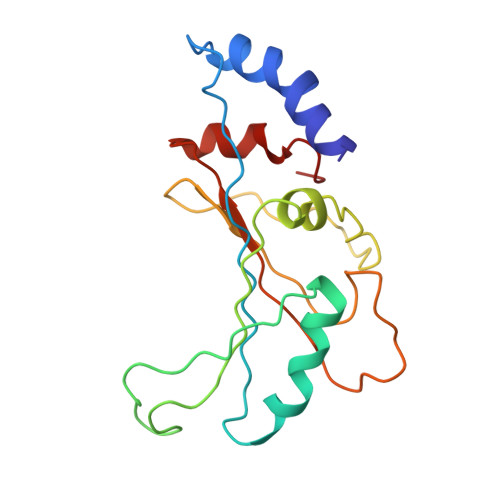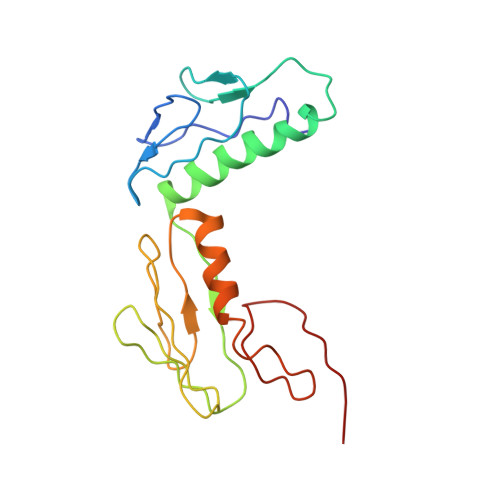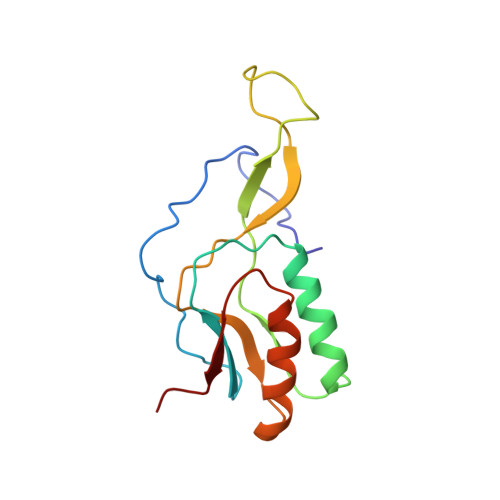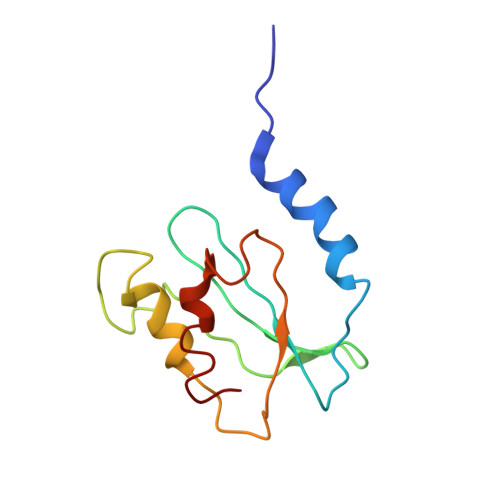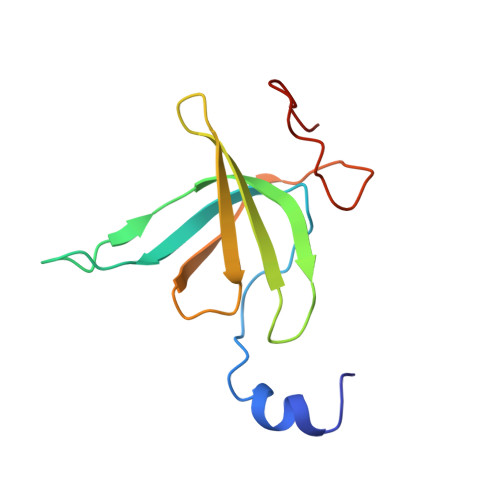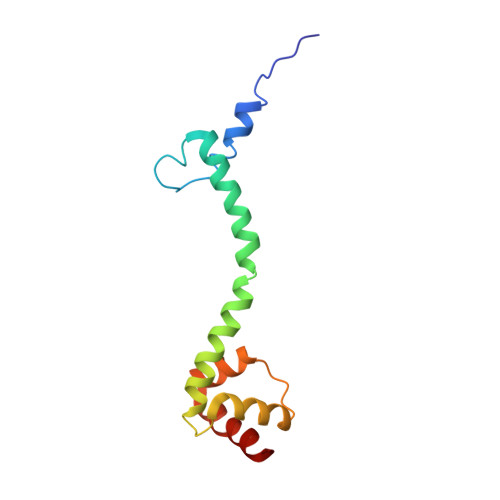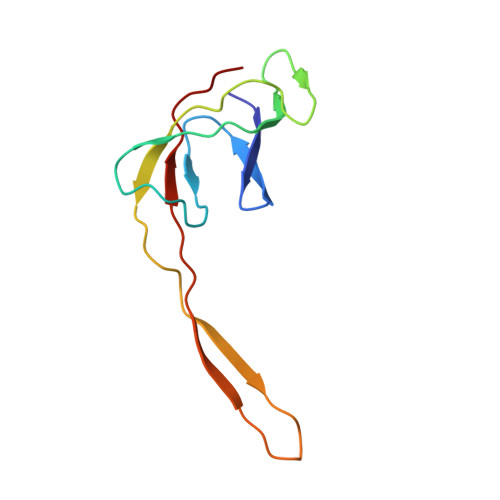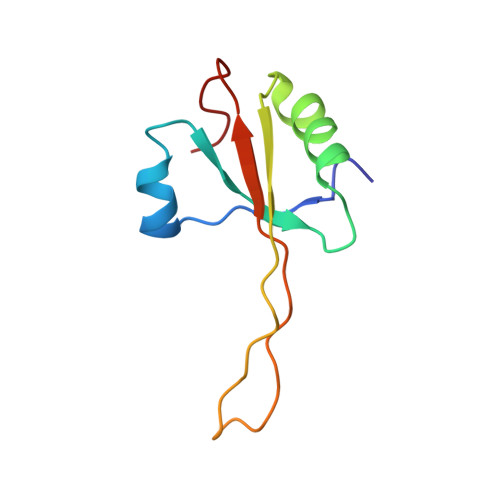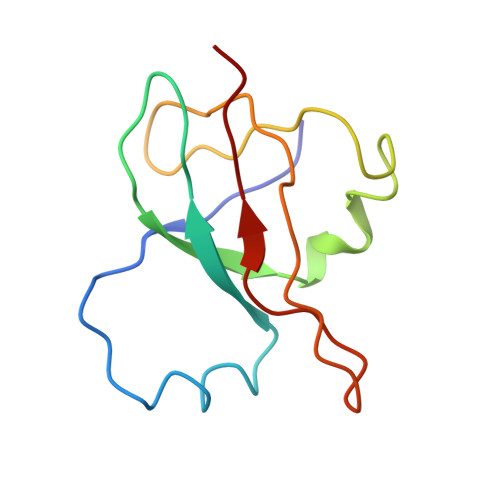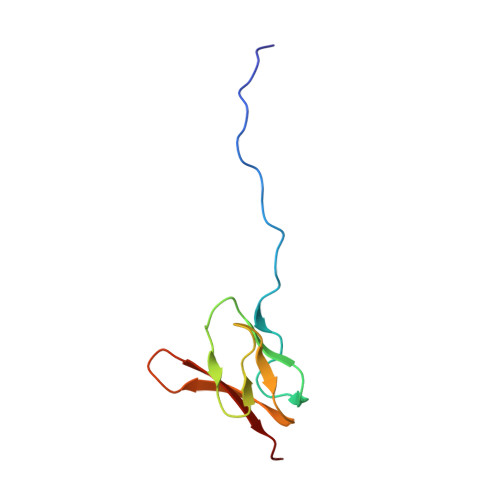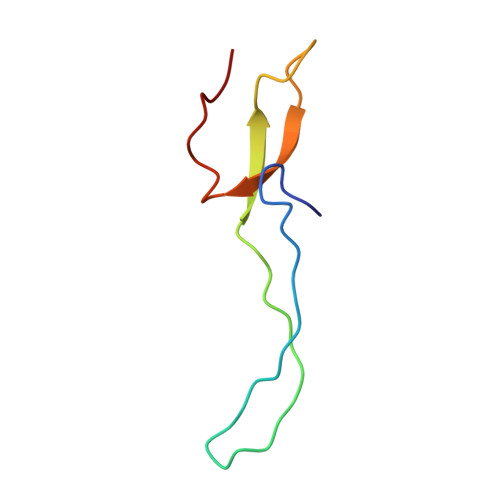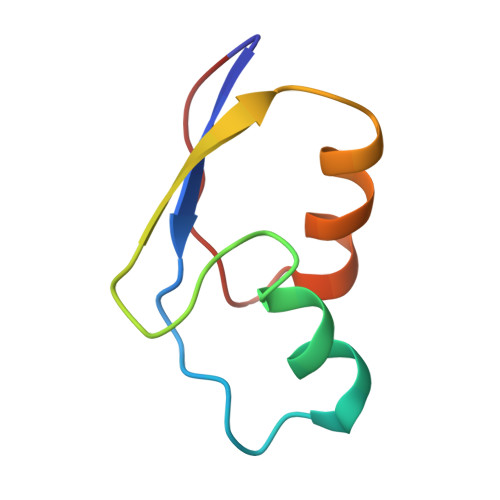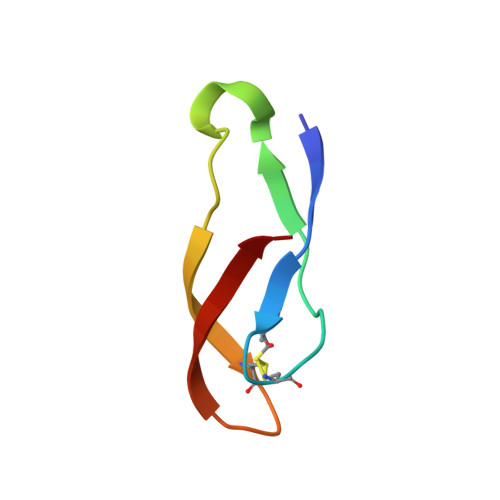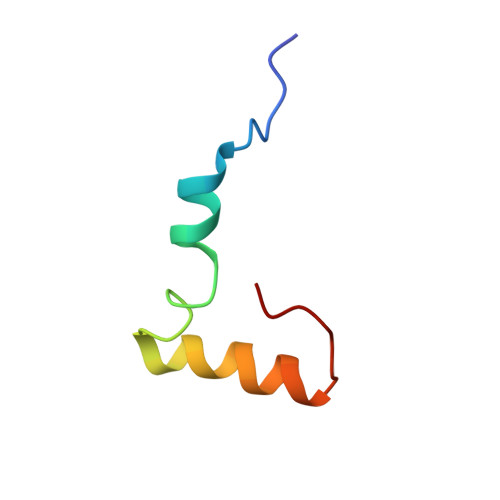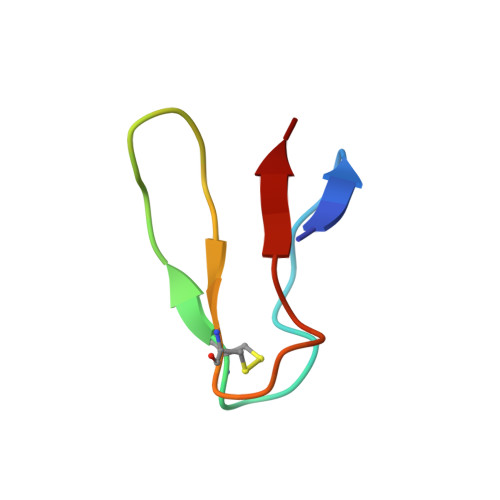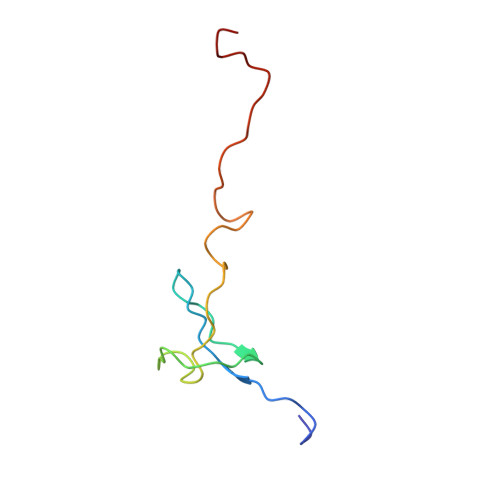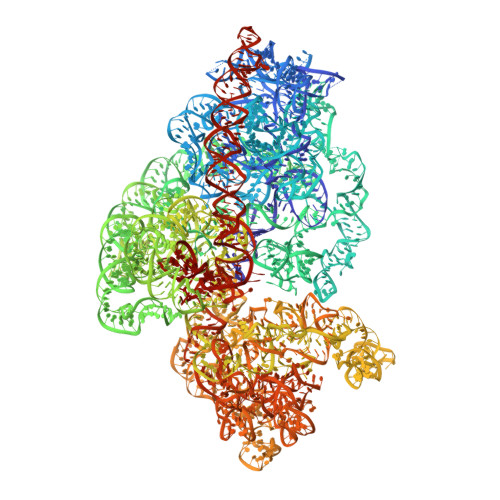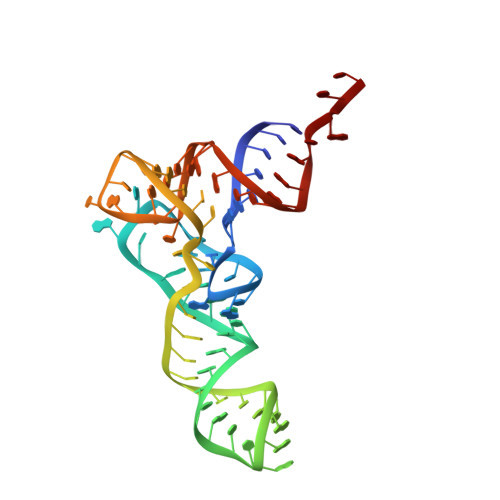Structural Basis for Linezolid Binding Site Rearrangement in the Staphylococcus aureus Ribosome.
Belousoff, M.J., Eyal, Z., Radjainia, M., Ahmed, T., Bamert, R.S., Matzov, D., Bashan, A., Zimmerman, E., Mishra, S., Cameron, D., Elmlund, H., Peleg, A.Y., Bhushan, S., Lithgow, T., Yonath, A.(2017) mBio 8
- PubMed: 28487427
- DOI: https://doi.org/10.1128/mBio.00395-17
- Primary Citation of Related Structures:
5T7V, 5TCU - PubMed Abstract:
An unorthodox, surprising mechanism of resistance to the antibiotic linezolid was revealed by cryo-electron microscopy (cryo-EM) in the 70S ribosomes from a clinical isolate of Staphylococcus aureus This high-resolution structural information demonstrated that a single amino acid deletion in ribosomal protein uL3 confers linezolid resistance despite being located 24 Å away from the linezolid binding pocket in the peptidyl-transferase center. The mutation induces a cascade of allosteric structural rearrangements of the rRNA that ultimately results in the alteration of the antibiotic binding site. IMPORTANCE The growing burden on human health caused by various antibiotic resistance mutations now includes prevalent Staphylococcus aureus resistance to last-line antimicrobial drugs such as linezolid and daptomycin. Structure-informed drug modification represents a frontier with respect to designing advanced clinical therapies, but success in this strategy requires rapid, facile means to shed light on the structural basis for drug resistance (D. Brown, Nat Rev Drug Discov 14:821-832, 2015, https://doi.org/10.1038/nrd4675). Here, detailed structural information demonstrates that a common mechanism is at play in linezolid resistance and provides a step toward the redesign of oxazolidinone antibiotics, a strategy that could thwart known mechanisms of linezolid resistance.
Organizational Affiliation:
Infection & Immunity Program, Biomedicine Discovery Institute & Department of Microbiology, Monash University, Clayton, Australia.








